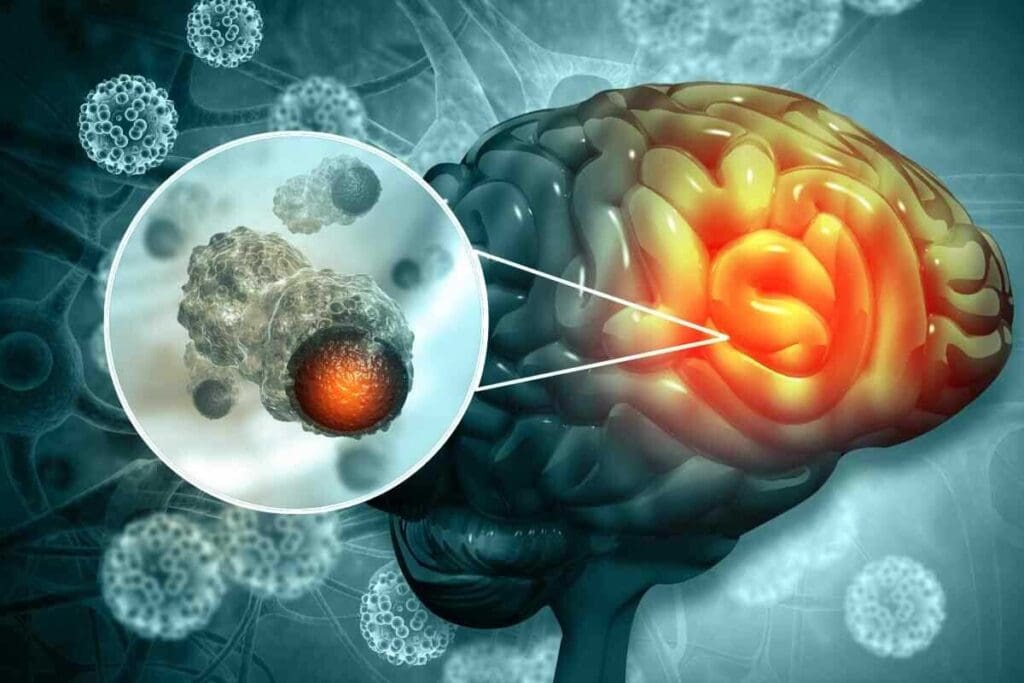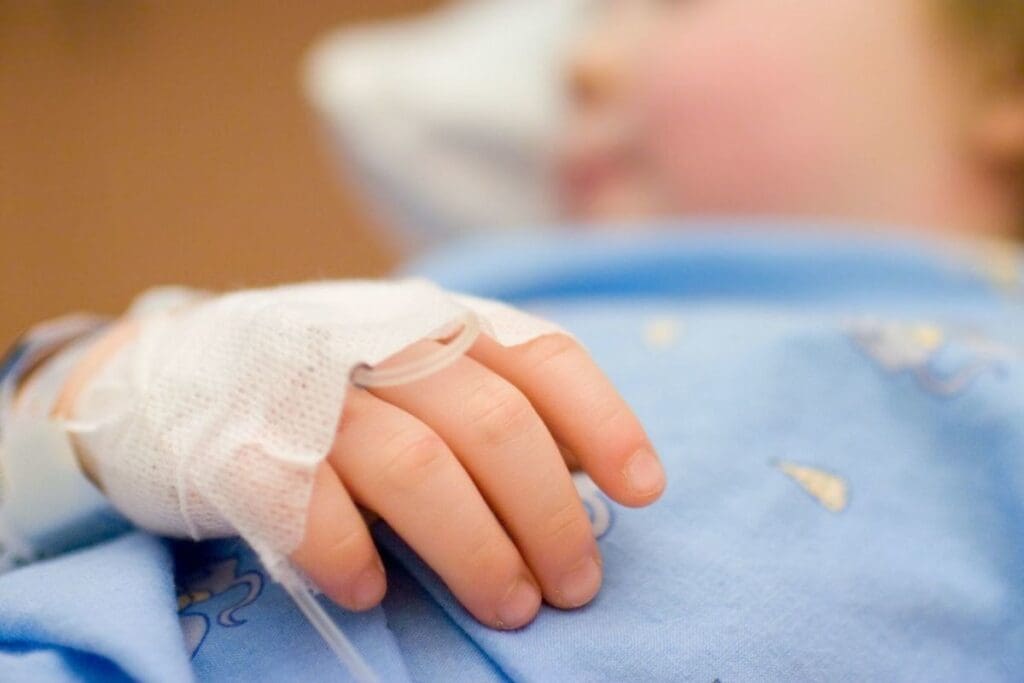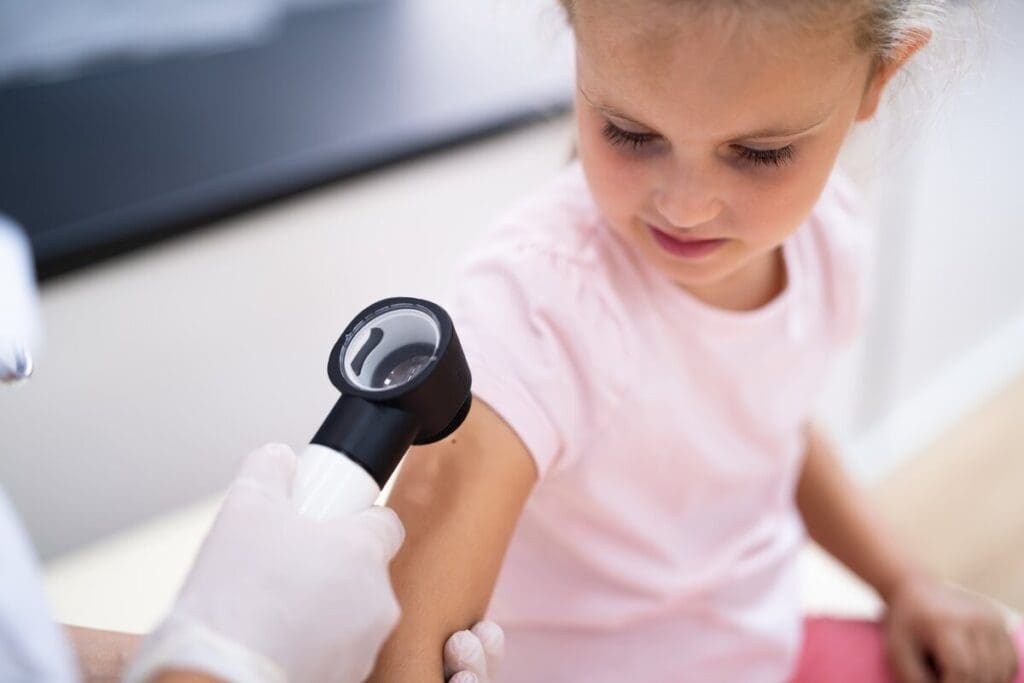Last Updated on November 24, 2025 by
Leukemia is the top cancer in kids, making up about 30% of all pediatric cancers. Getting a leukemia diagnosis can feel scary. But, knowing the facts helps a lot with treatment and support.

The American Cancer Society says leukemia makes up 28–30% of cancers in kids under 20. Acute lymphoblastic leukemia (ALL) is the most common type. This shows how key early detection and the right treatment are.
Childhood cancer is rare but a major cause of death in kids. It’s important to understand and act on this issue. We’ll look at the current situation in the United States, including how common it is and its effects on families.
About 9,550 kids in the United States will get cancer in 2025, says the American Cancer Society. Every year, around 9,600 kids under 14 are diagnosed with cancer. This means about 1 in 260 kids will get cancer before they turn 20.
Cancer is the second biggest killer in kids under 15, after accidents. These numbers show why we need to keep researching and spreading awareness. Groups like the Childhood Cancer Society are key in this effort.

When a child gets cancer, it deeply affects families. It impacts them emotionally, psychologically, and financially. Families with kids with cancer face big challenges from the start to after treatment.
The emotional strain is huge, with feelings of anxiety, fear, and uncertainty. Groups focused on childhood cancer awareness help a lot. They support families and push for better treatments.
For more info on pediatric cancer, check out the National Cancer Institute. They offer detailed info on the condition, how to diagnose it, and treatment options.
Leukemia is the most common cancer in kids around the world. It’s a cancer that affects the blood and bone marrow. It happens when abnormal white blood cells grow too much.
It’s important to know about leukemia early. This helps with early detection and treatment.
Acute Lymphoblastic Leukemia (ALL) is the most common type of leukemia in kids. It makes up about 34% of all childhood cancers. Symptoms include bone and joint pain, fatigue, weakness, bleeding, fever, and weight loss.
The number of ALL cases has gone up. Rates have risen from 30 cases per million kids in the early 1990s to 35 per million in 2017-2018.

The number of kids getting leukemia has been going up over the years. This shows we need to keep studying leukemia’s causes and risk factors. Knowing these helps us find better ways to prevent and treat it.
We don’t know all the causes of leukemia yet. But we know some risk factors. These include genetic problems, radiation, and some environmental factors. Look out for signs like persistent fatigue, unexplained bleeding, and frequent infections. These need to be checked by a doctor right away.
Brain and central nervous system (CNS) tumours are a big worry in pediatric oncology. They make up about 19–26.5% of childhood cancers. This makes them the second most common type, after leukemia.
Pediatric brain tumours are a wide range of cancers. Each has its own traits and treatment plans. The most common types are:
Knowing the exact type of brain tumor is key to finding the best treatment.
The symptoms of pediatric brain tumors vary a lot. They depend on the tumor’s location, size, and type. Common symptoms include:
Diagnosing brain tumors in children is hard. This is because the symptoms can be similar to other common childhood illnesses. MRI and CT scans are key for accurate diagnosis.
Early detection and diagnosis are vital for better outcomes in children with brain tumors. We stress the need for awareness and quick medical checks for any unusual or persistent symptoms.
Pediatric oncology deals with many cancers in kids, like lymphomas, neuroblastoma, Wilms tumor, and bone cancers. These cancers are not as common as leukemia and brain tumors. But they are a big threat to kids’ health all over the world.
Lymphoma starts in immune system cells called lymphocytes. In kids, it grows and spreads fast. There are two main types: Hodgkin lymphoma and non-Hodgkin lymphoma. Early detection and treatment have greatly improved survival rates for kids with lymphoma.
Neuroblastoma comes from immature nerve cells, mostly in babies and young kids. It can happen anywhere in the nervous system but often starts in the adrenal glands. The symptoms can vary a lot, depending on where the tumor is and if it has spread. Treatment plans are made just for each child based on their risk.
Wilms tumor, or nephroblastoma, is the most common kidney cancer in kids. It usually hits kids around 3 to 4 years old. Thanks to better treatments, more kids with Wilms tumor are surviving. Treatment often includes surgery, chemotherapy, and sometimes radiation.
Osteosarcoma and Ewing sarcoma are the top bone cancers in kids. Osteosarcoma makes immature bone and mostly affects teens during their growth spurt. Ewing sarcoma can happen in any bone but often is in the pelvis, chest wall, or legs. Both cancers need strong treatment, like chemotherapy and surgery. How well a child does depends on the cancer’s stage and how it first responds to treatment.
As we learn more about these cancers, it’s clear that finding them early and using the best treatments are key to better outcomes. Studies show that survival rates for kids with cancer have gone up a lot in recent years. “The progress in treating childhood cancers shows how far medical science has come and the hard work of healthcare professionals,” says a top pediatric oncologist.
Childhood cancer treatment has changed a lot over the years. This change has led to better survival rates for kids. It shows how far medical science has come and the hard work of healthcare teams.
There have been big steps forward in treating childhood cancer. This has led to fewer deaths and better survival chances. Survival rates for children with cancer have increased dramatically, with many kids now living into adulthood.
Today, treatments for childhood cancer are more personalized and focused. Innovations in genetic sequencing and immunotherapy help doctors tailor treatments for each child. Clinical trials also help find new treatments and therapies.
Places like LivHospital are key in caring for kids with cancer. LivHospital focuses on the latest in pediatric cancer care. They bring together experts and use the latest technology to help kids survive and thrive.
Leukemia, the most common childhood cancer, worries families and doctors a lot. Knowing about pediatric cancer is key for early treatment. Groups like the Childhood Cancer Society help families a lot.
Thanks to new treatments, kids with cancer have a better chance today. We need more research and teamwork to keep improving. Our goal is to give top-notch care and support to kids everywhere.
We must keep making progress in fighting childhood cancer. By using new ideas and centers like LivHospital, we can do better. Together, we can help kids with cancer have a healthy future.
Leukemia is the most common childhood cancer, making up 28-30% of cases. Acute lymphoblastic leukemia (ALL) is the most common subtype.
In the United States, about 9,600 kids aged 0-14 get cancer every year.
Symptoms of pediatric brain tumours depend on the tumour’s type and location. Common signs include headaches, seizures, and vision or behaviour changes.
Survival rates for kids with leukemia have greatly improved. This is thanks to better treatments and care. But the exact rate depends on the leukemia type and other factors.
The causes of pediatric leukemia are not fully known. But some genetic and environmental factors might increase the risk.
Treatment for childhood cancer has made big strides, with fewer deaths and better survival rates. Advances in care and new treatments have helped a lot.
Centers like LivHospital are key in treating kids with cancer. They offer top-notch care, new treatments, and support for families.
Yes, some childhood cancers like leukemia are becoming more common. But thanks to better treatments, death rates are going down.
Other common cancers in kids include brain tumours, lymphomas, neuroblastoma, Wilms tumor, and bone cancers like osteosarcoma and Ewing sarcoma.
Finding and treating cancer early is very important. It can greatly improve a child’s chances of survival and recovery.
Subscribe to our e-newsletter to stay informed about the latest innovations in the world of health and exclusive offers!